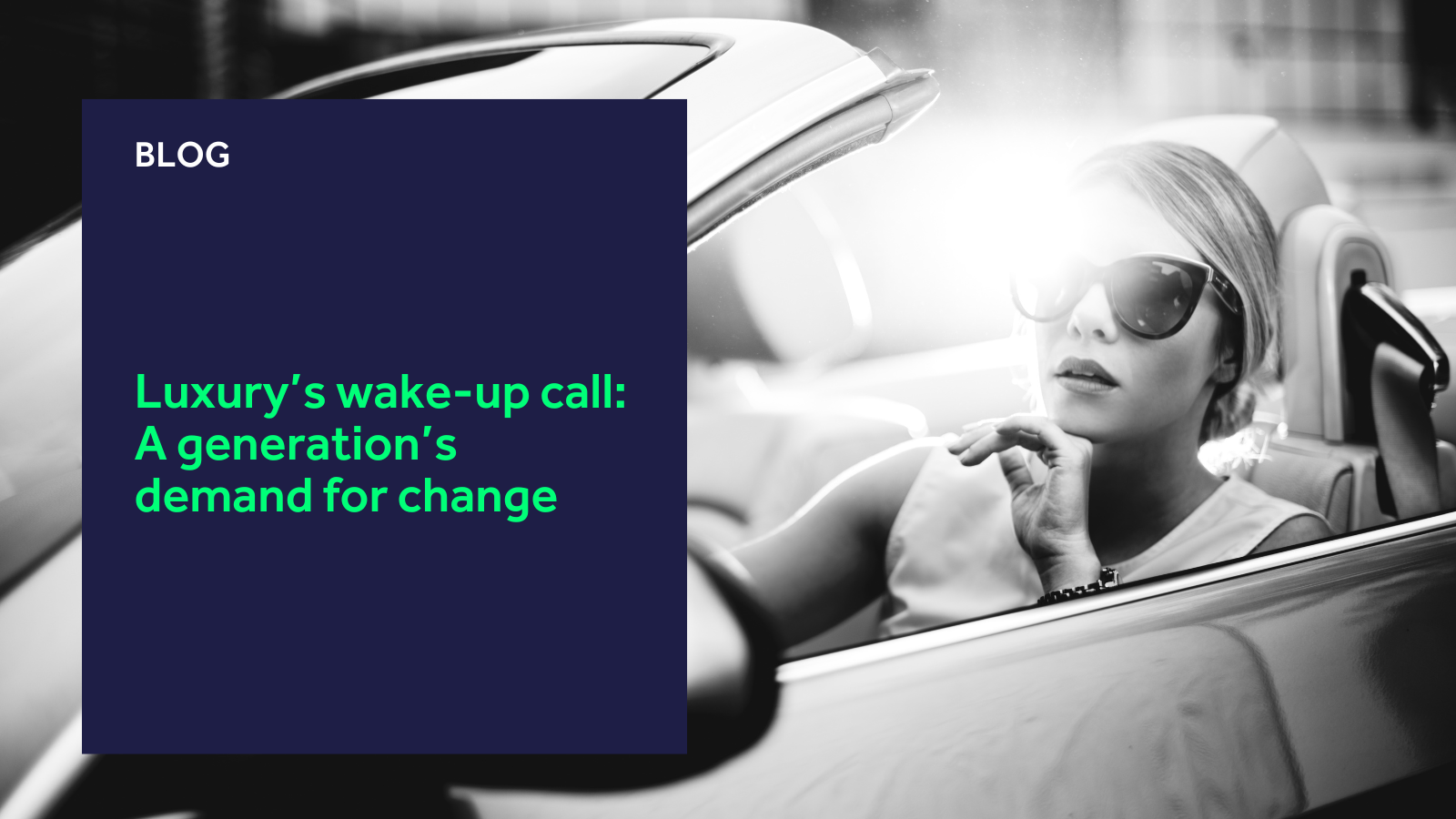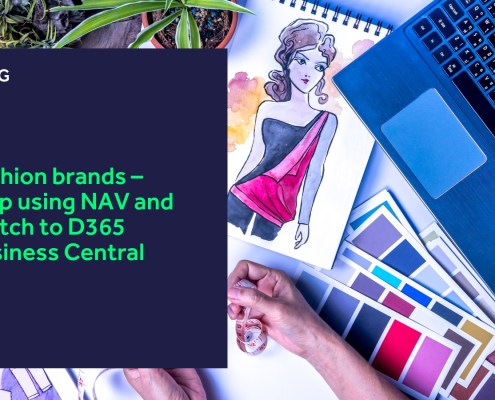It feels like it’s said all too often, yet brands still haven’t taken note: the new consumer is here, and they don’t like what you have to offer. No, this isn’t about whether you sell online or in-store; it isn’t about flashy new technology or even the economic difficulties straining wallets.
It’s deeper. Much deeper.
Luxury fashion is facing an identity crisis. Once untouchable brands like Gucci, Louis Vuitton, and Prada are struggling to keep up with a shifting consumer landscape that demands more than just a well-crafted handbag or perfect dress. The days of flashy logos and overpriced exclusivity are fading. Luxury needs to rebrand — and fast.
The fall of legacy luxury
Heritage was once thought of as a buffer against fluctuating consumer interests. With enough brand equity, fashion houses could survive turbulent times and push forward. The problem is that branding – the “it” factor in fashion – is tricky to get right all the time. Eventually, all big brands need to change, but luxury has historically been slow at adapting, convinced that affluent older consumers would prop them up indefinitely.
Unfortunately for these heritage brands, that’s just not the case. Estimates from Bain & Co show that by 2030, more than 70% of global luxury spending will come from Millennials and Gen Z. The time is fast approaching when older, affluent generations will no longer be enough to support the industry.
Brands need to work on cracking the new consumer soon or risk further losses.
Indeed, Kering – the owner of iconic houses like Gucci and Yves Saint Laurent – saw it shares hit a seven-year low in July. The only brands that seem to be performing well are those that serve the ultra-wealthy, like Hermès, which reported a 13% increase in sales this year. By contrast, Burberry has struggled considerably, seeing its shares fall to 2020 levels. Even behemoth LVMH’s champagne sales are dropping, with company CFO Jean-Jacques Guiony noting that the current global climate doesn’t exactly encourage people to open a bottle of bubbly. In the process of all this, LVMH chairman Bernard Arnault lost $19.2 billion of his net worth.
The crux of this issue lies in the disconnect between luxury brands and the rising cohort of Millennials and Gen Z. These younger generations are not only less loyal, but also less inclined to engage with the traditional formula of luxury. High prices, slick marketing, and unattainable aesthetics aren’t the drivers they once were. Today, the modern consumer craves authenticity and transparency — values that heritage brands are failing to deliver.
As Katina Fauteux and Chloe Lacombe told The Guardian, younger shoppers are drawn to second-hand or vintage luxury. They want brands that engage with them and make them feel part of something meaningful, rather than being part of a faceless transaction.
A new kind of luxury
So, what does luxury mean in 2024? If older consumers saw luxury as an exclusive club, Millennials and Gen Z are looking for something different: community and individuality.
Up-and-comers are sweeping up market share in the mid-price luxury segment. Brands like Represent, which merge streetwear with luxury, are resonating more deeply with younger audiences because their values are aligned. While we’ll cover this trend more extensively in another piece, it’s worth exploring how streetwear is increasingly serving as a gateway into luxury.
Streetwear – known for both community and individuality – has blended with luxury more frequently over the last few years, and brands are looking to capitalise on that. JLL’s recent report revealed how brands like A Bathing Ape and Kith are opening shops in high-end destinations like Chicago’s Gold Coast and Malibu. Likewise, Palm Angels has expanded into New York’s SoHo neighbourhood.
These labels are tapping into the merging of two previously distinct niches, reshaping what both luxury and streetwear mean for the young consumer. It’s crucial that high-end brands adapt because luxury is feeling the brunt of changing demands. HSBC’s ‘Cruel Summer’ report even noted that the sector is facing its sixth-worst year in two decades, with players like Burberry, Hermès, and Prada seeing lower-than-expected growth.
One of the key issues eating into profit margins in luxury is the persistent and heavy discounting aimed at persuading Asian consumers to return to the market. This again ties back into the issue of branding. When value is clearly articulated through the brand, price becomes less relevant. People may indeed be cutting back on spending during the cost-of-living crisis, but many brands are experiencing growth while legacy brands aren’t, at least not like they used to.
Luxury will survive in the short term while it remains buoyed by affluent older consumers, but in the long run, brands must recalibrate how they engage younger cohorts. If these words aren’t powerful enough to persuade, just wait.
Money talks, and younger shoppers will speak with their wallets.
Embracing authenticity in branding
In defence of legacy brands, there is a realisation that authenticity is the new currency. When McKinsey released The State of Fashion 2024 at the tail end of last year, it noted that 71% of fashion executives were planning to invest more in brand marketing in 2024 to build emotional connections.
A survey conducted by the Business of Fashion and McKinsey also found that 68% of respondents were dissatisfied with the high volume of sponsored content on social media, and 65% were turning away from fashion influencers compared to a few years ago. This highlights a major shift: consumers, especially Millennials and Gen Z, are looking for more authentic connections with brands, and the traditional, polished influencer model is losing its relevance.
This is where a new breed of influencers is stepping in. Figures like Amelia Dimoldenberg, known for her quirky YouTube series Chicken Shop Date, are gaining traction.
Last year, Dimoldenberg, who has a degree in fashion journalism, was invited to report for Gucci at Milan Fashion Week, signalling that luxury brands are beginning to recognise the importance of tapping into more genuine voices that resonate with younger audiences.
This shift in influence reflects a broader change in how luxury brands must approach marketing. Authenticity — whether in the brand itself or the people it associates with — has become the key factor in capturing and retaining the attention of today’s consumer.
Where does luxury go from here?
Luxury brands have been vying for the attention of younger generations for years now, but they haven’t managed to fully secure it. One popular tactic many brands have deployed is collaborating with streetwear and outdoor brands to capitalise on emerging trends.
The North Face x Gucci and Moncler x Hoka collabs are just two examples of how high-end brands are trying to court younger audiences by blending their heritage with the more casual, performance-driven preferences of Gen Z.
These collaborations, while sometimes seen as a way to inject new energy into an ageing brand, also highlight how far the definition of luxury has expanded.
Yet, collaborations alone aren’t enough to future-proof luxury. The real challenge is redefining the brand to ensure it feels authentic and desirable for younger cohorts. As Millennials and Gen Z account for an increasingly larger amount of luxury spending, brands need to redefine themselves — whether through sustainability, craftsmanship, or unique experiences.
The winners of luxury will be those who successfully rethink their core values and engage their customers on a deeper level.
Another way this could be achieved is through championing the circular economy. It’s no secret that the luxury resale market is booming. In January, it was estimated to be worth $50 billion.
Once considered the antithesis of high-end shopping, resale has cemented itself as a core part of modern luxury, particularly with Millennials and Gen Z whose love for the second-hand market is well documented.
Platforms like The RealReal and Vestiaire Collective have made it fashionable to shop vintage while engaging a new consumer desire: the wish to shop sustainably and affordably.
Think back to what Fauteux told The Guardian. Younger consumers don’t necessarily want to abandon luxury — they just want it redefined in a way that aligns with how they want to engage with it. By opening the doors more widely to resale, luxury brands can start building relationships with Millennials and Gen Z now so that when their spending surpasses two-thirds of total luxury spending, they’re already familiar with and bought into the brand.
To reinforce that last point, a study from brand intelligence business Motista showed that customers who are emotionally connected to brands have a 306% higher lifetime value versus satisfied customers. It’s crucial luxury brands foster that emotional connection now.
Luxury’s existential moment
Luxury finds itself at a fork in the road. Sticking to the old ways — chasing short-term profits, relying on logos, and pushing price hikes — no longer works. A generation demanding authenticity is reshaping the industry, and traditional brands must adapt or risk irrelevance.
Brands must stop viewing luxury solely through the lens of exclusivity and instead embrace its new meanings: quality, craftsmanship, ethics, and community.
Luxury doesn’t need to be abandoned. Far from it. But it does need a rebrand, or at least a major pivot towards catering to younger demographics.
Enjoyed reading this and want more insights into luxury? Check out our piece on how luxury companies can navigate their internal challenges with modern fashion solutions.
 https://www.k3btg.com/wp-content/uploads/2024/03/K3-strengthens-global-market-position-blog-header.png
900
1600
Jordan Heal
https://www.k3btg.com/wp-content/uploads/2022/03/K3_Master_Colour_RGB.svg
Jordan Heal2024-03-11 10:58:242025-02-21 14:37:51K3 Fashion Portfolio strengthens global market position as Tony Bryant spearheads new role
https://www.k3btg.com/wp-content/uploads/2024/03/K3-strengthens-global-market-position-blog-header.png
900
1600
Jordan Heal
https://www.k3btg.com/wp-content/uploads/2022/03/K3_Master_Colour_RGB.svg
Jordan Heal2024-03-11 10:58:242025-02-21 14:37:51K3 Fashion Portfolio strengthens global market position as Tony Bryant spearheads new role

